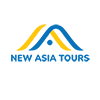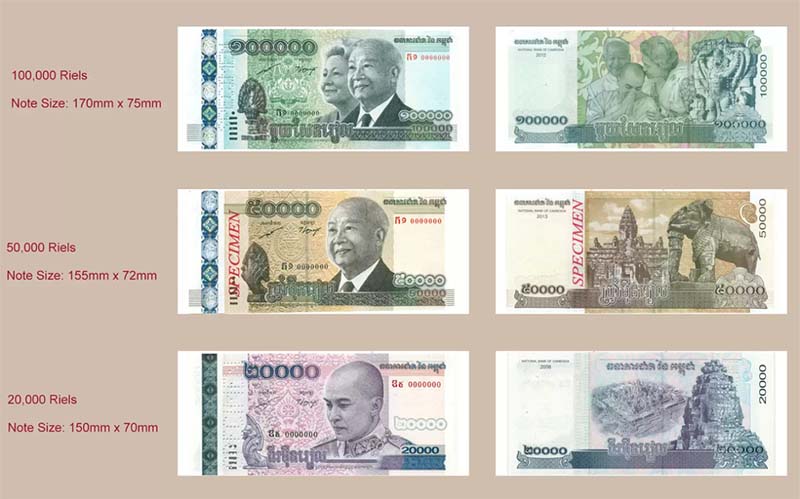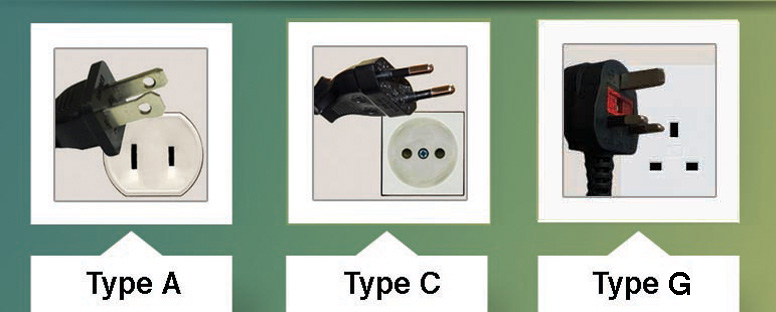


Cambodia Top Destinations & Holiday Packages 2025
INTERESTING ADVENTURES ARE AWAIT FOR YOU BELOW
Just check your wish trip and we will help you to make it true
The exclusive deals are available now, grab it today to save up to 35%
INTERESTING ADVENTURES ARE AWAIT FOR YOU BELOW
Just check your wish trip and we will help you to make it true
The exclusive deals are available now, grab it today to save up to 35%
ARE YOU STILL NOT SATISFIED WITH ALL ABOVE PACKAGES?
Let us tailor your trip, by clicking below buttons
+84-82557-8989 Customize your own itineraryFAQs - Useful Tips - Fun Facts Of Cambodia
1st Deposit Payments
- 50% payment after booking is confirmed with trip details agreed upon by both parties.
- We will start to make the booking and arrange the services for your holidays from now on.
- Payment can be made by Credit Card/ Bank Transfer/ PayPal
Final Payment (upon arrival)
- Our agent will meet you at the hotel and collect the balance (50%)
- Payment can be made in Cash or by Credit card.
- If you don’t want to bring cash much to pay the remaining balance, you can pay by Bank Transfer/ Credit card 7 days before arrival.
=> Payment policies reflect your desire to make your trip happen and help you get the best services at the best prices.
How to pay
- Secured bank transfer to New Asia Tours Co. Ltd account
- Online secured payment by bank link for you to pay by credit card: Visa, Master
- If the 02 preferred options above cannot proceed successfully, you can send money via the PAYPAL account.
=> The merchant service charges apply to deposit payments as their standard policy.
Cambodia is considered a safe travel destination. In 2022, the country welcomed 2.277 million international visitors, and 6.61 million in 2019 (before Covid pandemic).
However, travelers should always exercise caution to ensure safety and belongings. Here is some advice for you.
- In areas popular with tourists, minor crimes like bag theft and pickpocketing are common. It is crucial to remain watchful and implement measures to protect your belongings.
- Avoid walking alone during the night.
- Always inquire about prices before using services.
- Generate duplicates of crucial documents and save them digitally to prevent potential loss or theft.
- Verify with your travel insurance provider to confirm coverage for potential medical emergencies or theft.
The optimal timing for a Cambodia visit is during the dry season, usually from October through April. This phase boasts comfortable weather, and reduced humidity, perfect for exploring historical sites such as Angkor Wat and engaging in outdoor pursuits. The highest tourist influx occurs between November and February, coinciding with the coolest weather.
However, if you seek a calmer ambiance and vibrant scenery, contemplate a trip in the wet season spanning May to September. This period boasts hot and humid weather with occasional heavy downpours, yet offers less bustling and budget-friendly options.
You could see more tips about the best time to visit Cambodia in below Travel guide post:
https://newasiatours.com/best-time-to-visit-cambodia.html
In the country of Cambodia, the recognized currency is Riel (KHR). The riel is used alongside the US dollar in everyday transactions. However, for significant expenses and as a standard currency for numerous products and services, the US dollar is more frequently utilized.
The exchange rate between the riel and the dollar is relatively stable,
01 US dollar = 4,000 Riels (2023). While it is recommended to carry some riel for small purchases, US dollars are widely accepted in major tourist areas and businesses.

Cambodia's main language is Khmer, which is also denoted as Cambodian. With a long and significant history spanning many centuries, Khmer has become a vital component of the country's cultural heritage. It is estimated that a majority of over 90% of the people in Cambodia use Khmer as their main language.
While Khmer is the predominant language, there are also various minority languages spoken in different regions of Cambodia, such as Vietnamese (10%), Cham (2%), Chinese (1%), etc.
You could speak English with some Cambodians who work in some fields such as tourism, air service, hotels...
To get around Cambodia, you have several transportation options available:
● The most common mode of transportation is by bus, with numerous bus companies offering routes to various cities and towns across the country (Giant Ibis Transport, Mekong Express, Cambodia Sorya Bus, etc).
● You can also opt for shared taxis or tuk-tuks, which are convenient for short distances within cities. Transportation booking apps in Cambodia such as PassApp, GrabTaxi, Tada, and WeGo offer the availability of taxis, motorbikes, and tuk-tuks.
● For longer distances, domestic flights are available, connecting major cities like Phnom Penh, Siem Reap, and Sihanoukville.
● Another popular way to explore Cambodia is by renting a motorcycle or bicycle, especially in tourist areas. However, be cautious when driving and ensure you have proper documentation.
● Additionally, boats and ferries are great for traveling to coastal islands or along the Mekong River.
For most nationalities, a visa is required to travel to Cambodia. The specific visa requirements may vary depending on your nationality and the purpose of your visit. So it is advisable to check the official website of the Cambodian Ministry of Foreign Affairs or consult with the nearest Cambodian Embassy or Consulate to get the most accurate and up-to-date information regarding visa requirements.
Generally, tourists can obtain a visa upon arrival at the airports or land borders in Cambodia for a fee. This visa is valid for a certain period. Alternatively, visitors can also apply for an e-visa online prior to their trip.
Travelers from ASEAN nations including Brunei, Indonesia, Laos, Malaysia, the Philippines, Singapore, Thailand, and Vietnam can enter Cambodia without a visa for a duration ranging from 14 to 30 days.
The three types of power plugs used in Cambodia are Type A, Type C, and Type G:
● Type A sockets have two flat pins.
● Type C sockets have two round pins.
● Type G sockets have three rectangular pins in a triangular pattern.
If your device possesses a plug distinct from the local type, procuring an appropriate adapter is recommended. Opting for a versatile adapter accommodating various plug styles is wise. Also, Cambodia operates on a standard voltage of 230V and a frequency of 50 Hz. Hence, ascertain your devices' compatibility or consider bringing a voltage converter if required.

The most convenient and popular method is to book a taxi, tuk-tuk, or a rideshare service like Grab or PassApp. These can be easily found outside the airport terminal. They are also relatively affordable, with a fare of around $5-15 from Phnom Penh International Airport to most hotels in the city center.
Another option is to arrange a private airport transfer through your hotel or a local travel agency in advance.
If you are on a budget, you can also take a public bus with the cost is around $2-3, although they may take longer and be less comfortable, especially if you have a lot of luggage.
You should research and plan your transportation option based on your preferences, budget, and the hotel's location.
Major cities like Phnom Penh, Siem Reap, and Sihanoukville have numerous cafes, restaurants, hotels, and shopping malls offering free Wi-Fi to customers. Additionally, many accommodations, including guesthouses and hostels, provide Wi-Fi access to their guests.
Mobile network operators (Metfone, Smart, Cellcard) also offer affordable data plans, enabling people to access the internet on their smartphones. You can buy your own SIM card to make phone calls and access the Internet at the price of around 1-2 USD. Data packages are ranging from 2 to 10 USD, offering validity periods spanning 7 to 30 days.
Remote rural areas might have limited Wi-Fi coverage.
When visiting Cambodia, it is customary to tip in certain situations. Generally, rounding up the bill in restaurants and cafes is appreciated. For exceptional service, you could consider leaving an additional 5-10% of the total bill.
Tipping is also common for tour guides, drivers, and hotel staff. $5-10 per day is a good tip for tour guides and drivers. In hotels, leaving a small amount for housekeeping staff is a kind gesture, such as $1-2 per day.
Ultimately, tipping is appreciated, however, it is also discretionary, so adjust your budget based on the quality of service received and your personal satisfaction.
1. Customs and Etiquette in Cambodia
Here are a few key customs and etiquette to keep in mind:
- Greeting: The traditional Cambodian greeting is the Sampeah, which is a gesture of respect in which you place your hands together in a prayer position at your chest and bow your head. You can use the Sampeah to greet monks, elders, and anyone else you want to show respect for.
- Clothing: Cambodia is a hot country, so it is appropriate to dress in light, casual clothing. However, remember to cover your shoulders and knees if you are visiting a religious site.
- Showing respect for elders and monks: Respect for elders and monks is highly valued in Cambodian culture. When interacting with older individuals, it is customary to address them with appropriate honorifics and avoid touching the monks.
- Removing shoes: In many Cambodian homes and religious sites, it is customary to remove your shoes upon entering. Pay attention to see if others are doing the same.
- Refrain from pointing, touching people's heads, and creating loud noises.
- Dining etiquette: When dining with locals, it is polite to wait for the eldest or most senior person to start eating before you begin. It is also customary to use your right hand for eating, as the left hand is considered unclean.
Bargaining is a common practice in Cambodia when purchasing items in markets and local shops or using transportation services. It is a cultural norm for both locals and tourists to engage in negotiations to achieve a mutually agreed-upon price.
Begin by suggesting a price lower than your intended payment, then progressively raise your proposal. Keep in mind that staying patient and determined plays a crucial role in achieving favorable outcomes during negotiations.
3. Common Cambodian communication phrases
Hello: Chom reap sour
Goodbye: Chom reap lear
Chhnganh: Delicious
Ot tus! yeung chong tu tort: Excuse me! We would like to pay
Choul Mouy: Cheers
Lerk dach: Bottoms up
Nih thlai bonman?: How much does this cost?
T’lay nah: Too expensive
Counting: Moi (1), Bee (2), Bai (3), Boun (4), Bram (5), Bram moi (6), Bram bee (7), Bram bai (8), Bram boun (9), Dop (10).
4. Things to pack when traveling
- Here are what to prepare for a Cambodia trip:
- Don't forget to bring lightweight and breathable clothing suitable for the country's tropical climate.
- Sunscreen, a hat, and mosquito repellent are also essential due to the hot weather and potential mosquito bites.
- It is essential to have comfortable walking shoes when you are out exploring temples and markets.
- Furthermore, a travel adapter, a high-quality camera, and a refillable water bottle will be useful to bring along.
- Lastly, pack any necessary medication, a first aid kit, and copies of your important documents.
- Medical emergencies: 119
- Urgent police assistance: 117
- Fire police: 118
- Tourist police hotline: 012 942 484 (Phnom Penh) and 012 402 424 (Siem Reap).
1. The only flag featuring a building
Cambodia's flag is made up of three horizontal stripes: blue, red, and blue. Positioned in the middle is a white emblem showcasing the famous Angkor Wat temple. This temple holds UNESCO World Heritage status and is a significant cultural emblem of Cambodia.
2. The largest religious monument in the world
Constructed during the 12th century, Angkor Wat serves as both a sacred site and a prominent representation of Khmer architectural and cultural heritage. This expansive temple complex covers more than 400 acres and was initially devoted to the Hindu deity Vishnu, before transforming into a center of Buddhist practices.
With its intricate carvings, towering spires, and vast moat, Angkor Wat attracts visitors from all around the globe who come to marvel at its grandeur and immerse themselves in its rich historical, spiritual significance, and mesmerizing sunrise.
3. Cambodians celebrate the New Year in April
Known as "Choul Chnam Thmey" in the Khmer language, the Cambodian New Year is typically celebrated in mid-April. This traditional festival marks the end of the harvesting season and the start of a new agricultural year.
During this time, Cambodians engage in various traditional activities, such as visiting pagodas to make offerings and seek blessings, water splashing as a symbol of cleansing and good luck, and playing traditional games. It is a joyous time when family and friends come together to celebrate and honor their cultural heritage.
4. Insects are widely eaten throughout the country
They form a significant part of the country's culinary traditions and are enjoyed by locals and tourists alike. The consumption of insects has cultural, historical, and nutritional significance in Cambodia.
Insects such as crickets, spiders, beetles, and other arthropods are available in various forms, including fried, grilled, or cooked in delicious sauces. They are not only a source of protein but are also considered a sustainable and environmentally friendly food option.
Insects have gained popularity in Cambodia due to their unique taste, nutritional value, and their integration into traditional Khmer cuisine.
5. The largest freshwater lake in Southeast Asia
Situated in Cambodia, the Tonlé Sap Lake holds the title of Southeast Asia's biggest freshwater lake. Its expanse spans 2,708 mi² (7,000 km²) in the dry season, yet remarkably expands to 13,500 mi² (35,000 km²) during the wet season.
It is a significant natural resource and an essential ecosystem that supports a wide variety of flora and fauna. The Tonlé Sap Lake is not only a remarkable natural wonder but also plays a crucial role in sustaining Cambodia's biodiversity and economy.
6. There has never been a McDonald's in Cambodia
McDonald's, the global fast-food chain, has expanded to many countries around the world but hasn't established a presence in Cambodia yet. Cambodian locals predominantly depend on rice, seafood, and tropical fruits as their main food sources.
7. 95% of Cambodians are Buddhists
Buddhism in Cambodia is a blend of Theravada Buddhism and traditional animistic beliefs. Monks play a significant role in society, providing guidance and education. The influence of Buddhism can be observed in various aspects of Cambodian art, architecture, and festivals, making it an integral part of the nation's identity.
The country is home to numerous Buddhist pagodas, where people gather to worship, meditate, and seek spiritual guidance. The remaining 5% is made up of Muslims, Christians, and animists.
8. Tuk-tuks are the main means of transport used
Tuk-tuks are covered vehicles with bench seats that have become the main means of transport in many bustling cities and tourist destinations in Cambodia like Phnom Penh and Siem Reap.
Tuk-tuks are highly popular due to their affordability, accessibility, and flexibility in navigating through crowded streets. They provide a convenient mode of transportation for locals and tourists alike, offering short-distance rides and even city tours. Tuk-tuk drivers are known for their friendly nature and willingness to negotiate fares.
The colorful and open design of tuk-tuks also allows passengers to enjoy the scenic beauty of Cambodia as they travel from one place to another.
